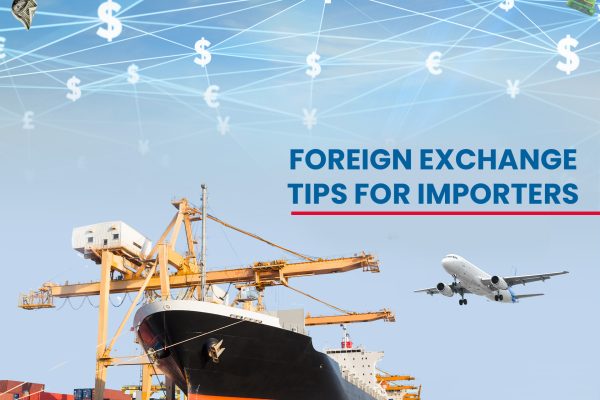The Australian Border Force (ABF) specifies that the customs value of imported goods must be expressed in Australian currency on the import customs entry.
Foreign currency must be converted into Australian currency at the rate of exchange prevailing on the day of export of the goods (not on the day the goods arrive in Australia).
Assessing exchange rate risks
When importing from any country, and especially China and other Asian countries, you will be exposed to certain exchange rate risks, which can impact your profits and the financial stability of your business. These risks are due to fluctuations in exchange rates between the supplier’s currency and your home currency.
To assess these risks, it is essential to analyse how changes in exchange rates can affect your profit margins and determine whether you need to take measures to protect your business.
The unpredictability of variable exchange rates
If you agree on a purchase price in a foreign currency, the cost to you in Australian dollars could increase if that currency strengthens.
A rise in the value of the Australian dollar against other currencies will make imported goods and services cheaper to buy, while your exports will become more expensive for consumers in foreign markets. Conversely, a fall in the Australian dollar means that imported goods and services cost more to buy, but your margins on exports will improve.
Conduct sales and purchase contracts in an established currency.
An effective strategy to reduce exchange rate risks is to conduct your purchase and sale contracts in an established currency, such as the US dollar or the Euro. In this way, both the importer and exporter agree on a fixed exchange rate for the duration of the contract, which reduces the uncertainty and import risks associated with fluctuations in the Chinese currency.
Invoice in AUD
You can reduce your exposure to currency swings by asking for invoicing in Australian dollars, shifting the risk to your supplier. However, the supplier is likely to want to increase their prices to reflect this risk, or may be unwilling to deal with you at all on those terms.
Forward exchange contracts
Alternatively, you can protect yourself against changes in the exchange rate using forward foreign exchange contracts or currency options. These binding agreements involve exchanging a set amount of currency at a fixed exchange rate on a specific agreed future date.
By locking in the exchange rate, you gain certainty on how much you will receive or pay, no matter how the Australian dollar trades. This will help you to budget and better manage your cash flow. However, be aware that you could miss out if the exchange rate trades in a direction more favourable to you before the agreed date.
Diversify your suppliers and source markets
Another way to reduce exchange rate risks when importing is to diversify your suppliers and source markets. By working with different countries and currencies, you can reduce your exposure to fluctuations in a particular currency.
It’s always worth keeping up to date with what’s available elsewhere. In addition, diversification can help you find new business opportunities and improve the quality and variety of your imported products.
Be informed and up-to-date
To deal with exchange rates and the inherent risks, it is essential to stay informed and up-to-date on economic and political trends that may affect foreign currencies. Pay attention to international news, economic reports and monetary policy decisions, and do not hesitate to seek financial and foreign trade advice to protect your interests and make informed decisions.
Let us help you optimise your imports! For more information about international payments and foreign exchange rates, talk to us here at Colless Young.
Contact Andrew, email enq@collessyoung.com.au Tel: +61 7 3890 0800.

